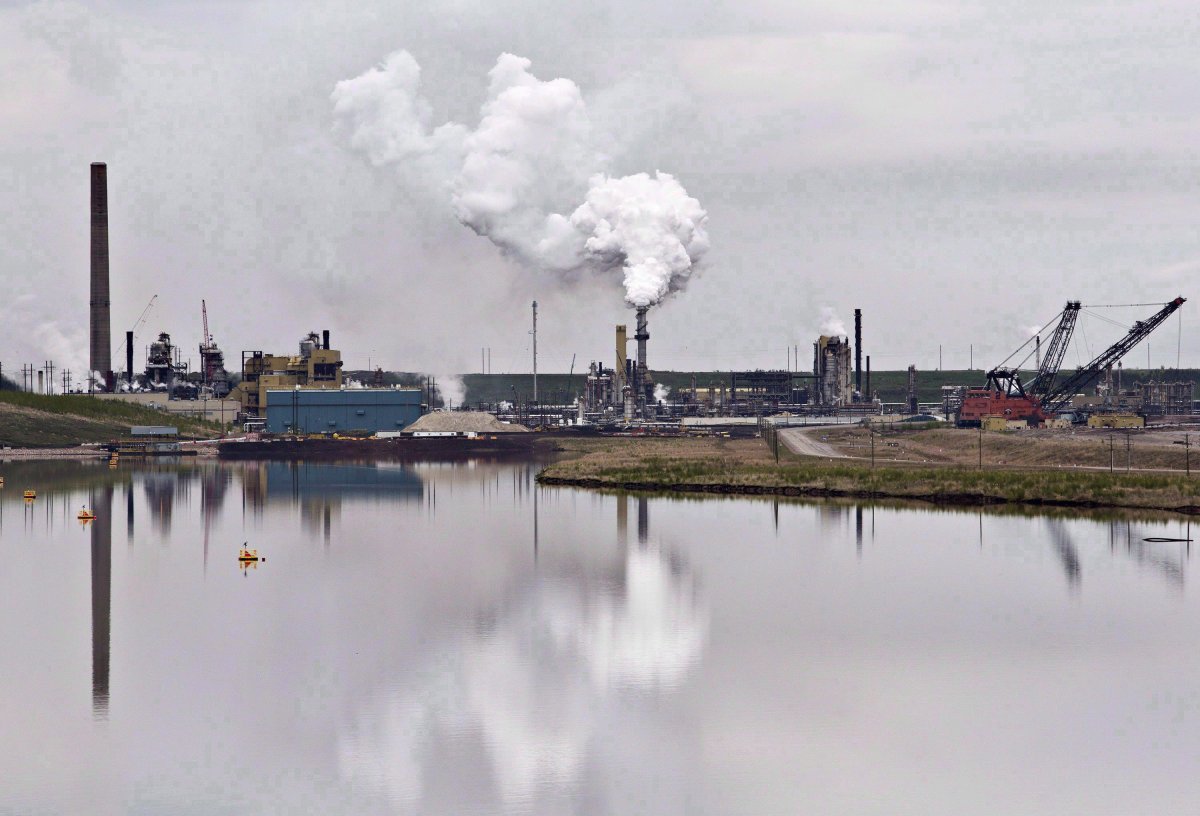A new report suggests major oil companies have fared well financially since oil prices crashed a few years ago.

The Corporate Mapping Project report, released by Parkland Institute and the Canadian Centre for Policy Alternatives B.C. office, analyzed how the five largest oil producers have fared during the recent boom-bust commodity cycle.
READ MORE: Calgary-based Suncor Energy reports third-quarter operating income of $1.56B
Lead author Ian Hussey said Suncor, CNRL, Cenovus, Imperial and Husky have remained “incredibly profitable corporations,” banking and paying out to shareholders $13.5 billion last year.
“There’s no question that the price crash had a major impact on the industry in Alberta, most importantly on the almost 20,000 workers who lost their jobs in 2015, but the Big Five are doing just fine,” Hussey said.
“As highly integrated multinationals — all with significant assets in the U.S. — they’ve been able to shift their operations in response to market conditions to ensure they remain profitable despite the issues that have been dominating the headlines in recent months.”
LISTEN BELOW: Energy Policy Analyst Dave Yager
READ MORE: Suncor says Syncrude to ramp up to full production in early to mid September
The report analyzed the five oil sands corporations, which produce 80 per cent of Canada’s bitumen. A number of statistics have been released in report, based on the 2009-2017 boom, bust and consolidation commodity cycle:
- The five companies paid $31.76 billion in dividends to shareholders over the period, including $12.56 billion since the oil price crash in 2014
- In 2017, the Big Five transferred a total of $6.2 billion to shareholders ($4.16 billion in dividends and $2.04 billion in share buybacks) and had residual savings of $7.3 billion, while paying out $4.72 billion in taxes and royalties to all levels of government
- The aggregate gross profit of the companies in 2017 was $46.6 billion, which was close to the Alberta government’s revenue of $47.3 billion
READ MORE: Cenovus reports $241 million third quarter loss, lowers capex guidance
Hussey said the report shows it is necessary to reconcile the forecast increases in emissions from the oil sands sector with the urgent need for science-based reductions in carbon emissions.
LISTEN: Ian Hussey of Parkland Institute joins Danielle Smith to discuss his study on Canada’s big oilsands companies
“Albertans have to ask if it’s worth it to continue to bet on the cost-cutting sector with weak fiscal and employment benefits that has emerged from the crash, or if now is the time to put in place the policies to position the province to benefit from the ongoing global energy transition,” he said.
READ MORE: Multibillion-dollar pricetag to clean up oilpatch ‘not an emergency’
Parkland Institute is a public policy research institute in the University of Alberta’s faculty of arts.
The report was part of the Corporate Mapping Project, which is a six-year research and public engagement initiative led by the University of Victoria, the Canadian Centre for Policy Alternatives B.C. and Saskatchewan offices, and Parkland Institute.


Comments